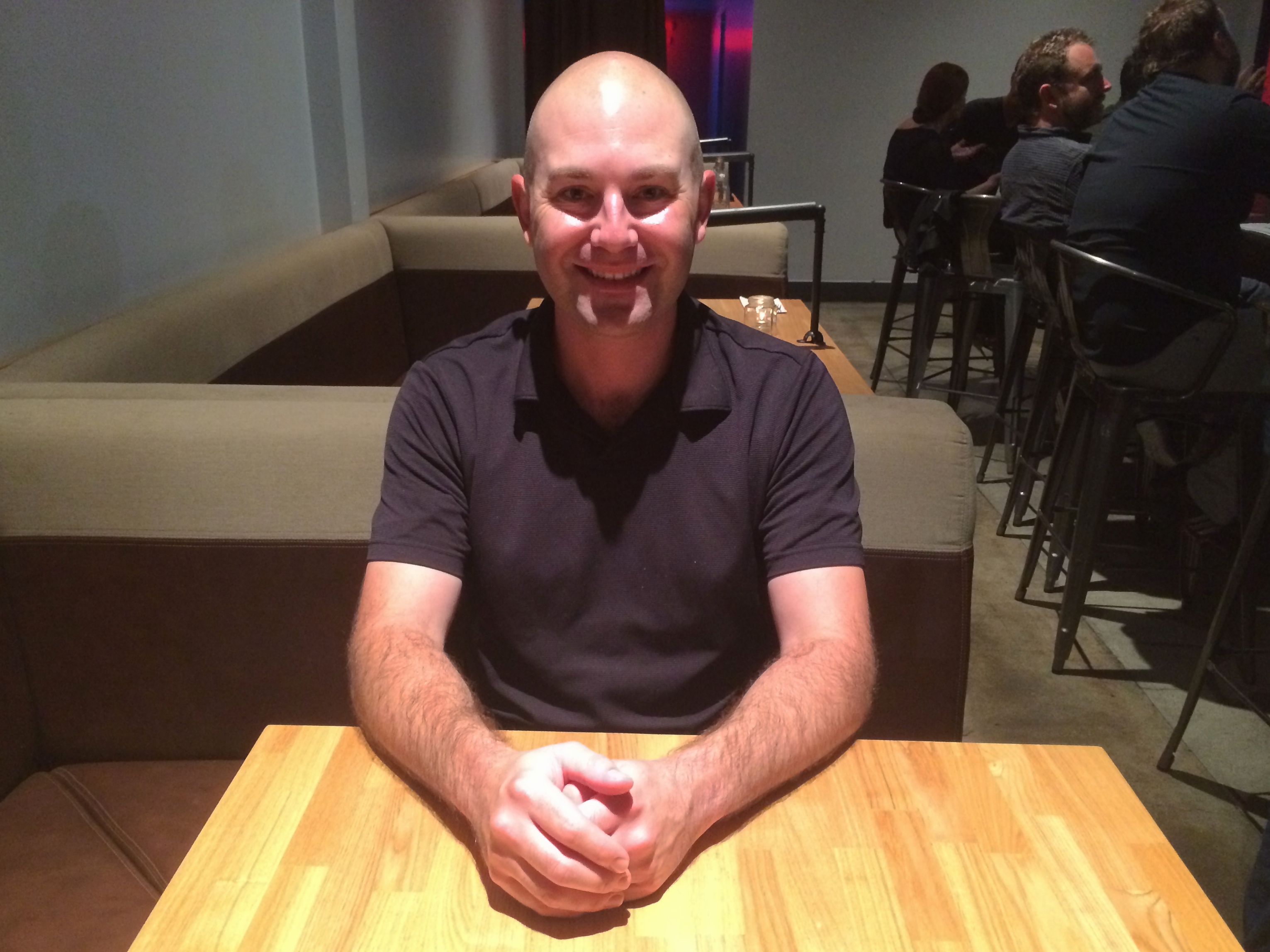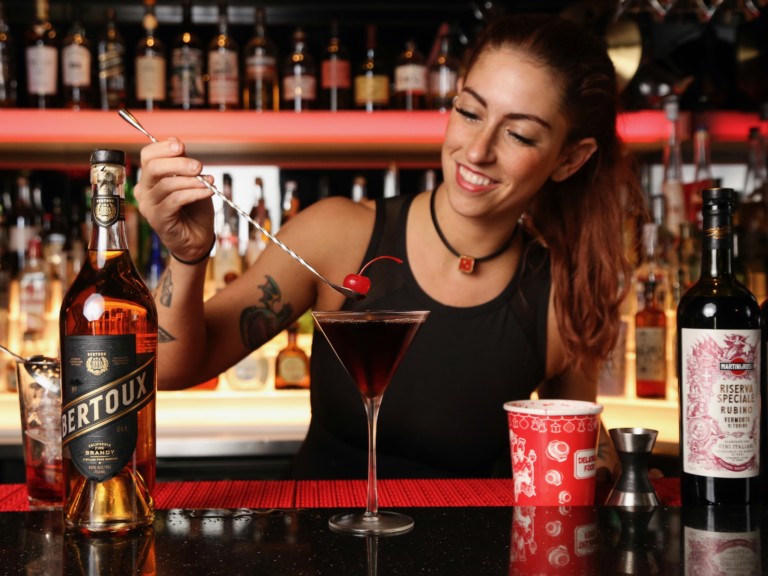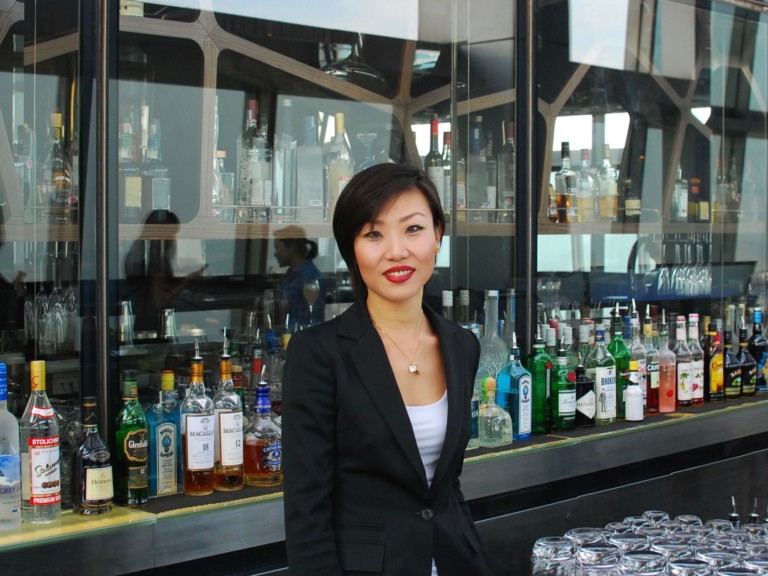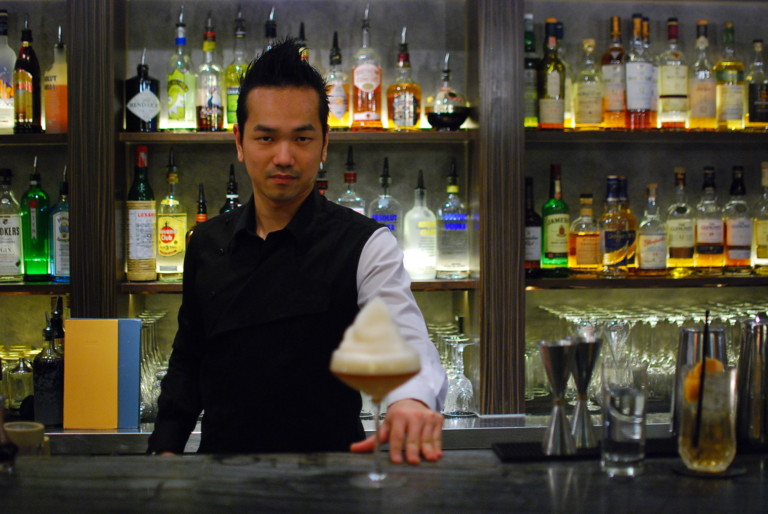Brady Weise grew up in L.A. A marketing job with Yellow Tail Wines took him to Tokyo, where he became a believer in Japanese hospitality. He returned to California and started down a bar-lined path that led him to the Bay Area and back home. He drew praise for his progressive creations at Tangier in Los Feliz. He transitioned to 1886, the retro Craftsman-style bar behind The Raymond in Pasadena, where he embraced the tutelage of Marcos Tello. Since then, Weise has become well-known for his experiments with malt cocktails, which incorporate craft beer. His prowess was on display during a LA Beer Week event at Plan Check, where crafted cocktails with Ballast Point beer and spirits while sharing valuable insights.
Josh Lurie: Liquor before beer, you’re in the clear. Beer before liquor, never sicker. How does that adage apply to beer cocktails?
Brady Weise: Hydration is key. I don’t think the rule applies at all. People tell me all the time, “I’ve been drinking this all night. I’ve been drinking that all night. I should stick with this.” If you don’t hydrate, you’ll still end up with a hangover. That’s the way it works. Just drink water in between. My general rule is 2:1. Two drinks, then I have a full glass of water and wait an hour.
JL: What was the first place you worked behind a bar?
BW: The very first place I ever worked behind a bar was in Tokyo, Japan. I was working for Yellow Tail Wines at the time. I was doing marketing for them. They were like, “Cool, you speak Japanese, we’re going to stick you behind a bar and talk to people about our wines.” I kind of fell in love with the process, the creativity and interest. I came back to Los Angeles for a brief moment to stay with my family and finish up school. Then I went to Northern California, started bartending up there and did a couple guest bartending spots in San Francisco. I started to kind of get the groove. I eventually started bartending full-time, just a bit north of S.F. Then I came back to L.A., and because of the skill set that I had, the knowledge that I had, and the languages that I spoke, they put me behind the bar in Hollywood. They were like, “Okay, go.” I learned quickly, on the fly, what to do, what not to do.
JL: What was the bar?
BW: Tangier. When they re-opened it, I was their principal bartender/GM. It was a lot of fun. It was an interesting experience, and I learned a lot about the craft. I started studying, reading books, and just making things. All of a sudden, people started coming by, “Have you seen this guy?” Joe Keeper and Naomi Schimek and Matt Biancaniello would come by and say, “We’ve heard about some of this stuff that you do. What do you have?” “I have this great new infusion, I have this great new foam. I have this great new espuma.” I explained to them what I was working on, and it grew from there.
Marcos [Tello] found me, and we’ve built this amazing relationship with training and trust. Since then, it’s been a great ride.
JL: How do you feel like your time in Japan impacted what you’re doing now?
BW: Huge. It’s amazing to me, because we’re now getting to understand what service is all about in the United States. We take for granted that we’re the biggest service market in the world. It’s the only sector of our economy that’s growing…In Japan, it’s an art form. When you walk into a bar, when you walk into a restaurant, when you walk into any kind of establishment that’s a service-based environment, they’re extremely strict, but they’re extremely forgiving as well. They want to teach how to make people happy. You work the door for a year, you open the door and you close the door. What they’re really teaching you is to know the regulars who come in every day. Who’s the guy or girl who comes in once a week? The family that comes in once a month? What are they celebrating? You learn their names or what they do. Then, when you finally work your way up to tables, you know them. “How have you been?” That’s what they’re training you to do, know people. That’s something we’re beginning to learn in service in the U.S., bartending especially. It’s just getting to know your regulars. What are your regulars really like? What are they interested in? There, we springboard into, “Hey, I’ve got this great new liquor. I’ve got this great new beer. It’s really amazing. I love it. I would love you to try it.”
JL: When did you first start experimenting with beer cocktails?
BW: About three years ago. I was at 1886 on a Sunday night, and I was working on a Negroni variation. A Negroni always uses orange zest, to express more to the drink, to give it more character. I wanted to take away from some of the bitter notes and give it more of a high top ethereal note. We had a Bavarian hefe on tap, so I made a Negroni, stirred it very lightly, put it over ice and topped it with a hefe. I tasted it and thought, “It’s on the right track. It’s just missing something.” At that moment, Marcos came in and said, “What’s that?” “Nothing serious, I’m just working on stuff. It’s a Negroni variation, but I topped it with a hefe.” He said, “Can I try it?” “Yeah, sure.” He tried it, looked at me and said, “I want five more of these by next week. Start working on this. This is a good idea.” I started experimenting, tasting and testing. Finally, we dialed in a family for this, and we began to build what it means to make a malt cocktail. How do the beer and the spirit talk to each other? What’s the best texture and profile?
One of those things I’ve always tried to stay away from is that idea of a Boilermaker. That’s just for intoxication. If you want to reach oblivion, I can get you there, but I’d rather have you enjoy the experience and enjoy the ride.
JL: You call them malt cocktails. There are some beers that aren’t especially malty. There’s a pretty wide spectrum of flavor profiles with beer. Do you gravitate towards maltier beers?
BW: Not necessarily. We coined the term malt cocktails as a general sort of overlay, because a beer cocktail is more along the lines of a black and tan or a shandy or a michelada. This is not what we’re doing with beer and spirits. We’re working with both in conjunction, not just as a side note. To try to re-brand the category, we came up with the idea of a malt cocktail. A lot of people still call them beer cocktails, and we’re not opposed to that, but we want to try and differentiate ourselves a little bit more.
JL: What is the most recent malt cocktail you developed, and what was your inspiration?
INTERVIEW CONTINUED ON THE NEXT PAGE









Blog Comments
Michele Beaulieu Naquaiya
October 12, 2014 at 4:27 PM
Congratulations Brady and Happy Birthday!